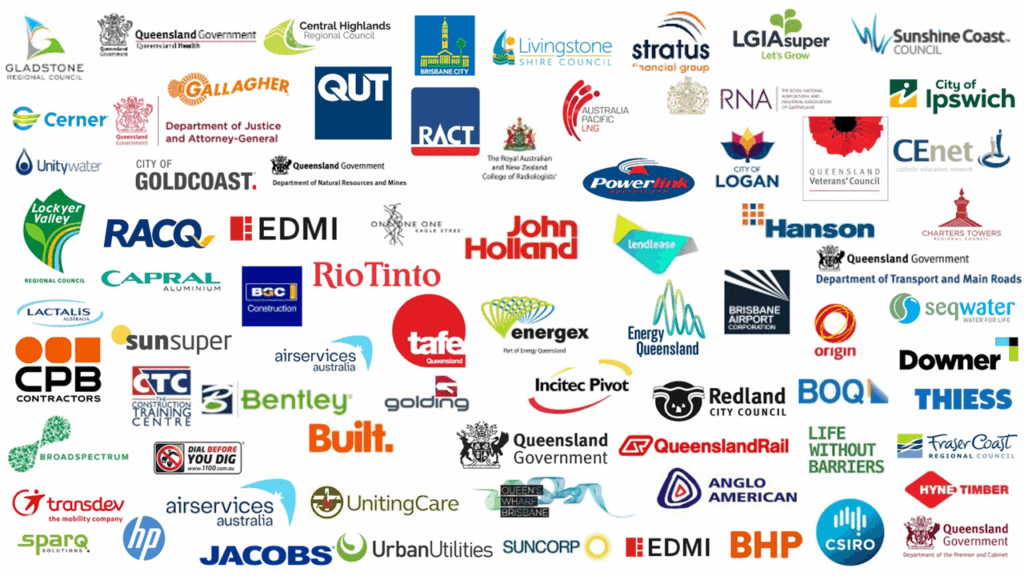CASESTUDY
DEPARTMENT OF NATURAL RESOURCES, MINES AND ENERGY
Delivering Strategy
Queensland’s previous Department of Natural Resources, Mines and Energy’s (DNRME) Resources Safety and Health (RSH) division was responsible for regulating safety and health in the Queensland resources sector. The division has now evolved to be a statutory authority known as Resources, Safety and Health Queensland (RSHQ) and it ensures that acceptable standards of safety and health are practiced in the Queenslands resources industry. RSH consisted of the following business units:
At the time of our consulting support RSH was facing imminent change. Following a series of inquiries initiated in 2015 after the re-emergence of coal workers pneumoconiosis in Queensland, enabling legislation was introduced to Parliament to establish RSH as an independent statutory body. Coupled with a range of other non-legislative initiatives and reforms, the establishment of RSH as a regulatory authority independent of DNRME is intended to better safeguard the safety and health of Queensland mine and quarry workers, restore worker confidence in the regulator, and ameliorate concerns about any real or perceived regulatory capture.
OUR ROLE
Considering these forthcoming changes, Shape Consulting was engaged by Resources Safety and Health (RSH) in 2018 to undertake Strategic Workforce Planning. Through a deliberate, data-driven, collaboratively facilitated process, we worked with internal stakeholders to place strategy, customers and the experience of people in the Division at the heart of the future organisation.
Shape Consulting was initially engaged to undertake this process with RSH’s Occupational Health and Hygiene (OHH) business unit. The engagement was subsequently extended to include the four business units within the Safety in Mines Testing and Research Station (Simtars); namely Occupational Hygiene, Environmental and Chemistry Centre (OHECC), Training, Testing and Certification Centre (TTCC), Mine Safety Technology and Research Centre (MSTRC), and Business Support Centre/Office of the Executive Director (BSC/OED). In 2019, the engagement was further extended to include the remainder of RSH’s business units: Business Strategy and Services (BSSU), the Explosives Inspectorate, the Petroleum and Gas (P&G) Inspectorate and the Mines Inspectorate.
Across all of RSH’s business units, the key objectives of this engagement were to:
Our pragmatic approach to this engagement was fully aligned with the whole-of-government workforce planning framework developed by the Public Service Commission (PSC) to assist departments to develop their strategic workforce plans. As such, this included the exploration of each business unit’s current strategic and operating plans (Align), identification of current and future capabilities, competencies, delivery models and structure (Profile), identifying the gaps and changes required (Transition), and establishment of review mechanism for ongoing improvement (Review).
From a top down perspective, we began by understanding the Resources Safety and Health Branch’s strategic and business plans, budget, overall resourcing plan and current workforce plan, alongside their relationship to each business unit. Where strategy, budget, and resourcing were clear, we undertook our core process. If any of these inputs were markedly unclear, we undertook a scenario process, wherein we engaged with stakeholders to co-design multiple ‘futures’ and plan to the most plausible. Both processes included the same steps for each business unit within the Branch:
Following engagement with each business unit, reports were provided to business unit Directors to summarise the outputs of the workforce planning process. After reporting on the final business unit, we consolidated the outcomes of each to produce a whole-of-division recommendation report, outlining workforce strategies to drive the achievement of the division’s objectives over the next three years.
Despite the Division’s unique circumstances, many of the workforce challenges facing RSH were, for the most part, no different to those faced by many Government entities. Like many other agencies, RSH grapples with limited staff resources and capacity constraints, budget pressures, political imperatives, and service delivery demands (both domestic and international). The looming prospect of retirement in many key roles presents a short to medium term risk, particularly considering the limited talent pool for these highly specialised roles. As much of RSH’s corporate knowledge vests in these incumbent staff, attrition in these roles will represent a significant loss of intellectual capital and a risk to business continuity. Above all, loss of key resources could represent a risk to the safety and health of Queensland’s mine workers. As a consequence, the need to attract and retain staff and embed corporate knowledge becomes crucial to the RSH’s workforce planning strategy.
Key Outcomes:
The key outcomes for the business have been enormous with an outstanding growth rate and market share across Australia and especially in New Zealand. At an individual level the team has expressed gratitude at their continued development and evolution as leaders. Retention of key personnel has been a major outcome that has been achieved due to the integrated interventions that we have delivered over time.










